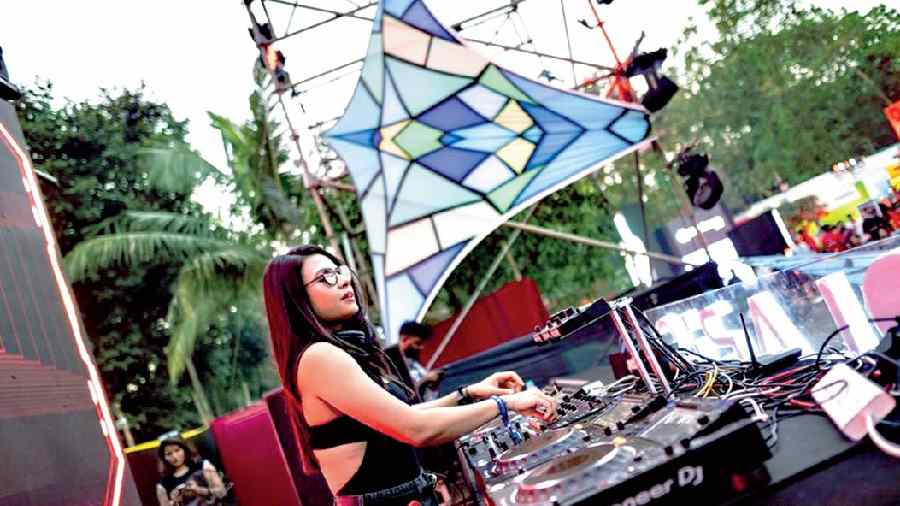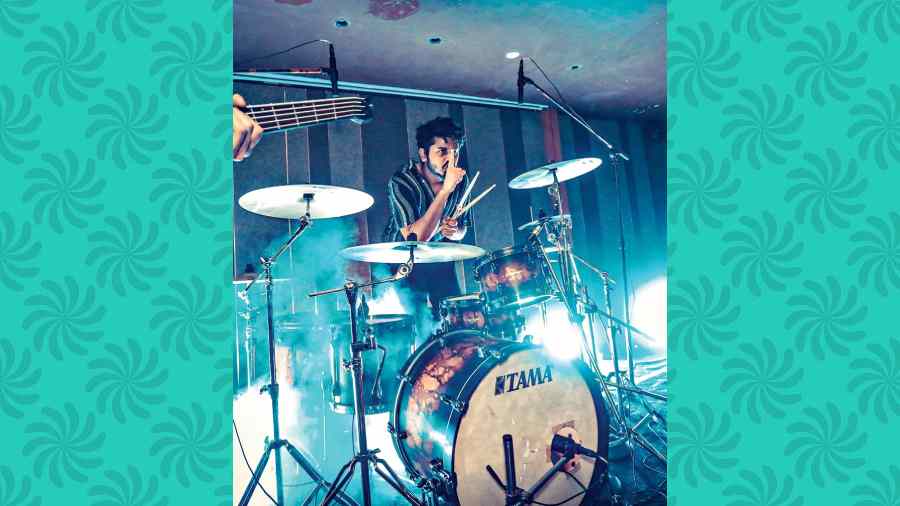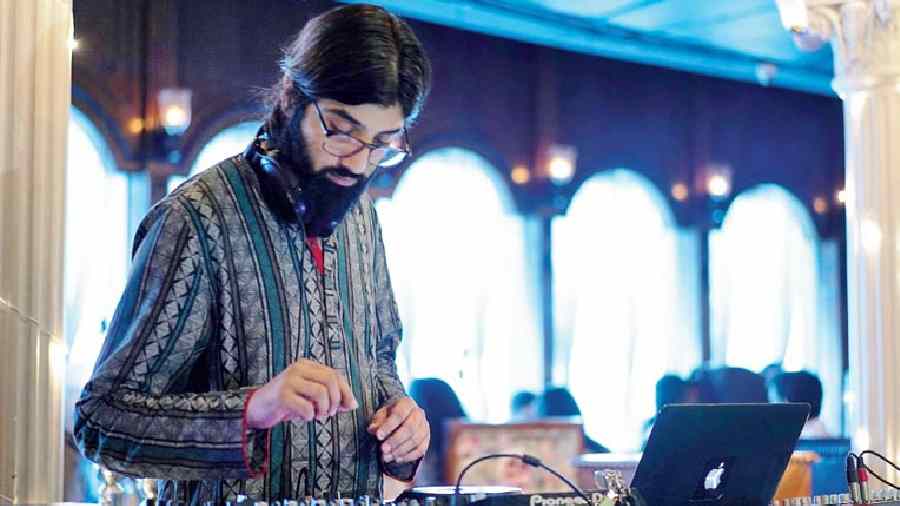Watching your favourite artiste perform live is a thoroughly enjoyable and memorable experience. A person whom you’ve only heard on TV or online is standing before you, singing the songs you listen to on a loop. But it’s not all fun and games when events go out of hand and the blame game begins. After singer KK passed away soon after his show in Calcutta on May 31, fingers were pointed (though nothing has been proved). In November last year, Travis Scott’s performance at the Astroworld Music Festival ended in a stampede, taking the lives of some of the concertgoers. Such incidents should serve as a wake-up call for the entertainment industry. t2 explores the various do and don’ts that need to be taken care of to make a live show an enjoyable affair for both the audience and the artiste...

The stampede at Travis Scott’s Astroworld festival in Houston in November 2021 left several people dead
Weather and ventilation
During winters open-air shows are hosted because of the weather but that’s not the case during summers. The venue requires proper air-conditioning, ventilation and, very importantly, clean bathrooms. Artistes do come with tech riders (a list of technical stage instructions), like everyone should feel comfortable, proper F&B and green rooms, and the onus is on the organiser to make sure these are met. Shiladitya Bose, aka Arcane, who is the co-founder of music festival Sublime CCU, said that during their “warehouse edition” the AC was a priority. “Apart from the artiste, there are those working on lights, sound and stage, so they also need a comfortable environment. What happened to KK can happen to anyone. In the heat, people are sweating and losing energy,” he said. In many gigs people smoke on the premises while the AC is on. “This makes others in the club smoke passively while the small smoking rooms become smoke chambers,” he said.
In overdrive
Due to the pandemic, the music industry took a back seat and live gigs had stopped completely. Now that the scene is back, a lot of artistes are working round the clock to make up for the money that has been lost. Taking on extra gigs, flying to a different city almost every day and maintaining the same energy and hype at all performances… when does one say, “Stop”?
This is where an artiste’s manager plays a crucial role, to maintain the balance. With such tight schedules, they still attempt to not let their audience down. It is the manager who should ensure they are healthy, not pushed around, and health check-ups are done regularly. “Organisers don’t know about how an artiste is feeling to prevent accidents, it’s up to the management to look into this,” said Varun Desai, artiste, curator and organiser.
Artistes love to do as many shows as possible, but a break now and then, is always welcome. Managers should spread out concert dates and artistes should take a firm stand.

Guitarist Adil Rashid

DJ and performer Priyanjana

Percussionist Sambit Chatterjee Picture: Soham Matilal

Artiste and curator Varun Desai

Shiladitya Bose aka Arcane
Crowd management
With a lot of ticketed events, it’s normal to assume gigs come with 30 to 40 extra tickets (for indoor events mainly). For outdoor events there is not much in way of limit as you have all the space you need. According to Varun Desai, each person at an event should have about 5sq ft of space. “Since I have been involved with some niche genres I have not really faced overcrowding. But there was this John McLaughlin gig that I had hosted where there was a huge demand for entry. The best thing to do in such cases is keep the entry point a little away from the main gate. So even if the main gate is shut, the entry and exit points are not crowded in case of an emergency or a stampede,” he said. Love Parade, which was a much-loved music festival in Berlin, unfortunately had to shut down because it was faced with a stampede as well.
When it comes to ticketed events, programmers, organisers and venue owners should stick to the number of tickets sold rather than offer entry to all for a few extra bucks. Last-minute additions are often made to the guest list. According to Varun, people who do that are “amateurs”. “I had to turn away 300 people for the John Mclaughlin gig and, of course, they weren’t happy about it. You can’t run everything on jugaad.” A good way to prevent this is to give out proper information of pre-sale tickets with the announcement of the gigs.
Guitarist Adil Rashid believes that a place with controlled audience and security has some exclusivity and creates demand. “There should be ample security to handle crowds according to the size of the space. It makes the show exclusive and creates more demand for a repeat show for the artistes and increases the value of the performance,” he said.
Other than overcrowding, there are a few people who misbehave in the audience and ruin the experience for others. Crowding the space of the artistes is a big no-no. The stage must always be clear for the artistes. The audience wants to have fun and some end up jumping behind the DJ or hugging their favourite singer on stage but security should always be present to prevent such situations. “I had to learn this the hard way. During a gig with Fire House in 2009 I had to spend 80 per cent of my time moving between the audience and the stage,” said Varun.
DJ Priyanjana says that large-scale events should ensure enough security to keep an eye on the crowd. “They should know how to handle or remove anybody creating trouble at the venue,” she said.
Amenities
Dancing, raging, sweating and repeating... it’s only normal that someone’s body will get tired. While hosting events it is mandatory to cater to both artiste and audience needs. Small things matter, like water, AC, clean bathrooms, a green room, enough space, food at pocket-friendly prices, security. Most festivals and gigs do provide all the amenities but unfortunately it’s not the case everywhere. “I attended a gig recently where there was no water. You get tired after a show and we had to buy water from the bar,” said Arcane. Some of the big festivals, like Sunburn and Supersonic, have an artiste village where performers relax, undergo therapy and more.
Fighting for basic amenities is something artistes seem to face regularly. Adil has personally gotten into many disagreements with event organisers over this. “It may come across as being demanding at first, but it is absolutely necessary because artistes have to perform under a lot of stress and hydration is the most important thing along with food, some energy-boosting snacks and drinks like Gatorade or ORS. We are very particular about this and all artistes and their management must prioritise these things to assure no one is harmed irreparably,” he said.
On the other hand, Priyanjana has been a part of events where there have been doctors and medical assistance on standby. “It is difficult to manage large crowds at once with extreme effectiveness and due to this, some unfortunate events do occur. I feel that during the course of the event, professionals must be made available at thoughtfully appointed stations so if a situation arises, immediate action can be taken,” she said. Another facet she considers important is the need for emergency exits, in case of any accident.
The blame game
It’s a common thing to do when things go wrong. Percussionist Sambit Chatterjee says all of it is the fault of indiscipline. “Because the organisers will say: ‘This is how things have been done for 25-30 years.’ And that’s not wrong. Artistes may say this s**t has been happening far too long and it needs to stop, and that’s not wrong either,” he said. In his eyes, nobody is wrong... “it is indisciplined upbringing which has led us to this situation and for that we need to change the system.”
“If they don’t take a bite of that (discipline) cake, they will be the loser. That needs to change. We need to feel more dependent on one another, be kinder, be more mindful and more conscious,” he said.
Unlearning and learning
From having trouble at gigs to hosting big names like Jazzfest in the city, Varun believes in learning and fixing. “I hope people achieve that knowledge and fix the wrong. If they live in denial, that’s more problematic,” he said.
For Adil, it took 12 years to get to a comfortable place in the city in terms of management at gigs, but it’s still not there he believes. Cutting corners is responsible for most of the trouble that he has faced and at times clients and organisers don’t care much about the artistes beyond the performance. “I have been stranded on a few occasions in some very remote places after my performance because the organisers just gave up all responsibilities towards the artiste after the performance. We risk a lot with our equipment and there’s a lot of mutual trust involved. It’s good for artistes to be slightly self-dependent. We’ve learned it the hard way,” he said.
Sambit Chatterjee said: “India is always on the verge of mishaps, things somehow function but everything can go wrong at the snap of a finger. It requires a radical change in our thinking, it’s something we need or else chaos thrives.”
Closing set
We do live in a society of “it’s me before you”. A selfie with a fan goes a long way and so does a bottle of water for an artiste. It’s the small things that matter. So do we, as a society, really want to risk the health of others, for the sake of a few extra bucks or a moment of fun?
